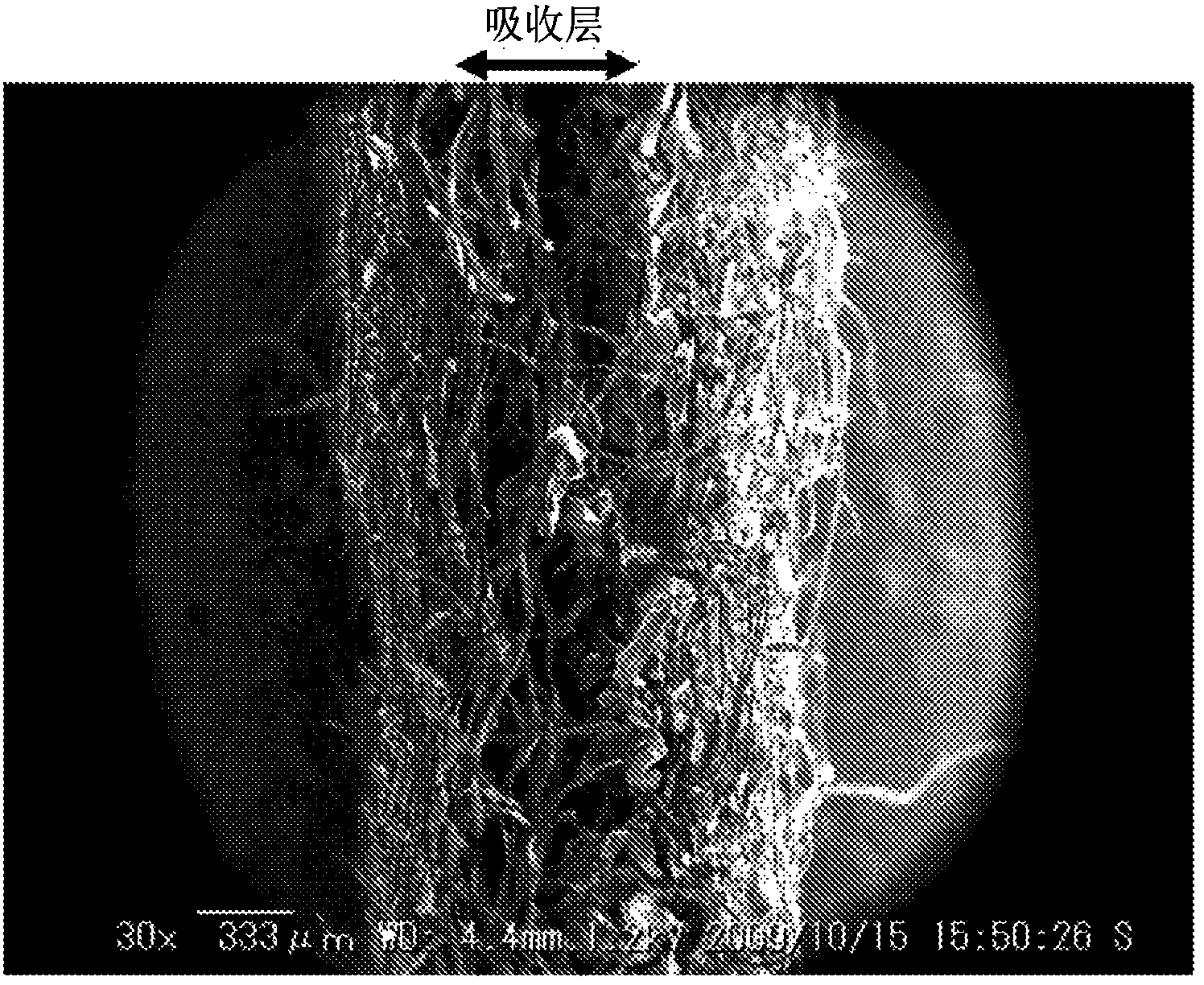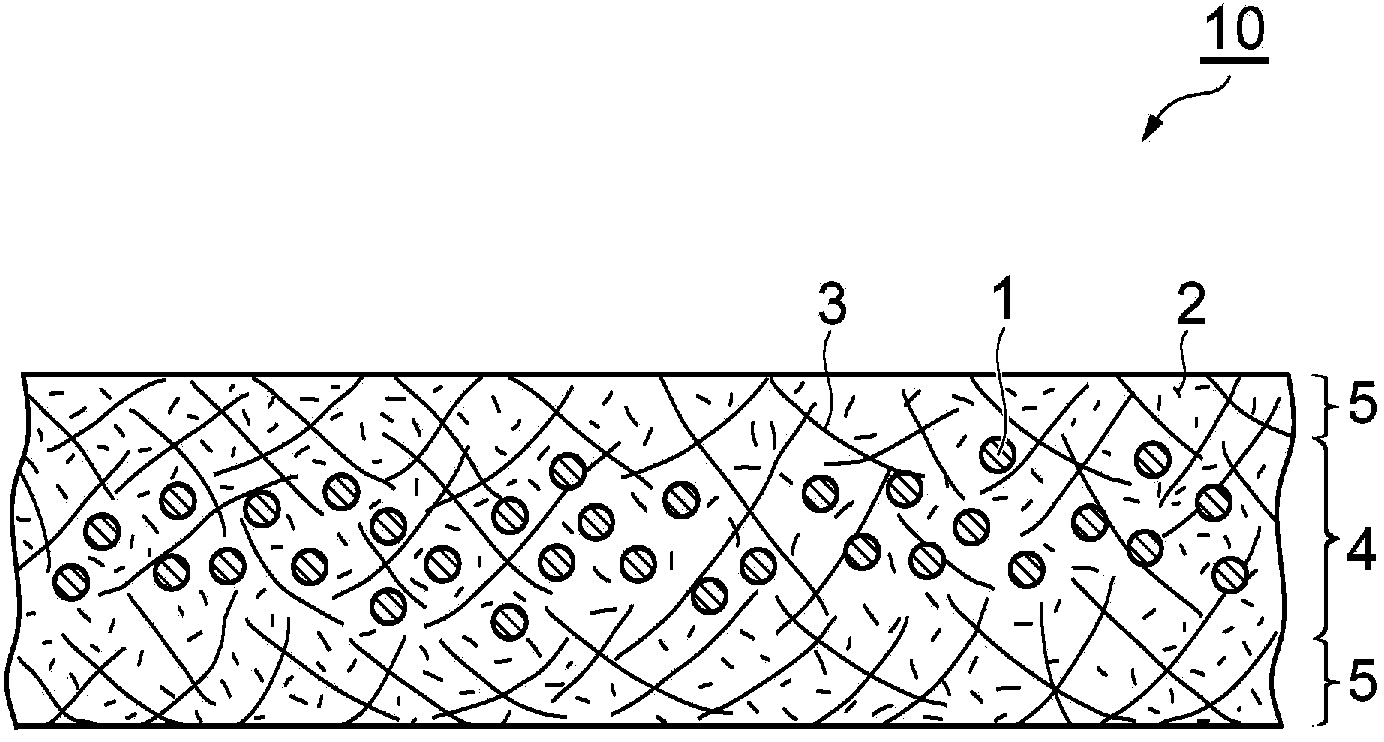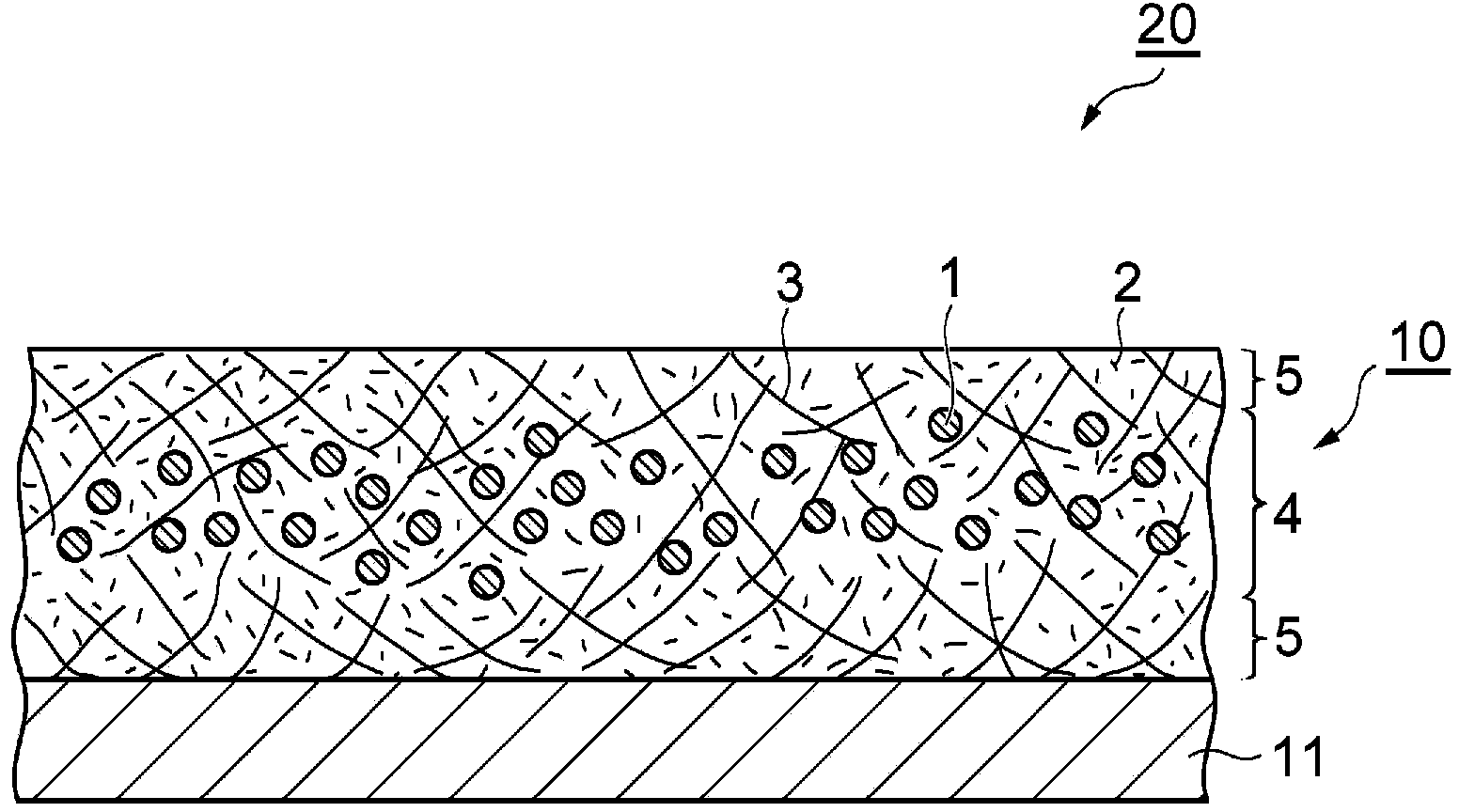Absorbent sheet and method for producing same
A manufacturing method and absorbent sheet technology, which can be applied to absorbent pads, non-woven fabrics, textiles, and papermaking, and can solve problems such as poor productivity, difficulty in constantly exerting the performance of absorbent resins, and poor operability
- Summary
- Abstract
- Description
- Claims
- Application Information
AI Technical Summary
Problems solved by technology
Method used
Image
Examples
Embodiment
[0281] Concrete examples and comparative examples of the present invention are shown below, but the present invention is not limited to the following examples.
[0282] (1) Determination of water absorption capacity of resin without pressure; Tea-bag (tea bag) method
[0283] Absorbent resin A (g) (about 0.5 g) was evenly placed in a tea bag (7×9 cm) made of nonwoven fabric, and immersed in 500 cc of physiological saline at a liquid temperature of 25° C. for 1 hour. After the specified time, pull up the tea bag, and after 10 minutes of natural water control, measure the weight B (g) of the tea bag. The same operation was performed with only the tea bag without adding the absorbent resin, and the measured weight C (g) was set as a blank. From these values, the water absorption capacity was obtained by the following formula.
[0284] Water absorption ratio (g / g)=(B(g)-C(g)) / A(g)
[0285] (2) Determination of the absorption rate of the resin; Vortex Method
[0286] 50 g of 0....
manufacture example 1
[0350] [Production Example 1] (Preparation of ammonium acrylate by neutralization of acrylic acid)
[0351] As the acrylic acid, a reagent special grade product manufactured by Wako Pure Chemical Industries, Ltd. was used. Acrylic acid is distilled before use to remove the polymerization inhibitor before use. Next, 100 kg of acrylic acid was dissolved in 91.02 kg of water. While cooling this aqueous solution with an ice bath so as to keep the liquid temperature at 30° C. or lower, 117.94 kg of a 25% by mass ammonia solution was gradually added with stirring to obtain a 40% by mass ammonium acrylate aqueous solution.
manufacture example 2
[0352] [Production Example 2] (Preparation of sodium acrylate by neutralization of acrylic acid)
[0353] As the acrylic acid, a reagent special grade product manufactured by Wako Pure Chemical Industries, Ltd. was used. Acrylic acid is distilled before use to remove the polymerization inhibitor before use. Next, 100 kg of acrylic acid was dissolved in 43.2 kg of water. While cooling this aqueous solution with an ice bath so as to keep the liquid temperature at 30° C. or lower, 166.7 kg of a 25 mass % sodium hydroxide aqueous solution was gradually added with stirring to obtain a 40 mass % 75 mol % neutralized sodium acrylate aqueous solution.
PUM
 Login to View More
Login to View More Abstract
Description
Claims
Application Information
 Login to View More
Login to View More - R&D
- Intellectual Property
- Life Sciences
- Materials
- Tech Scout
- Unparalleled Data Quality
- Higher Quality Content
- 60% Fewer Hallucinations
Browse by: Latest US Patents, China's latest patents, Technical Efficacy Thesaurus, Application Domain, Technology Topic, Popular Technical Reports.
© 2025 PatSnap. All rights reserved.Legal|Privacy policy|Modern Slavery Act Transparency Statement|Sitemap|About US| Contact US: help@patsnap.com



